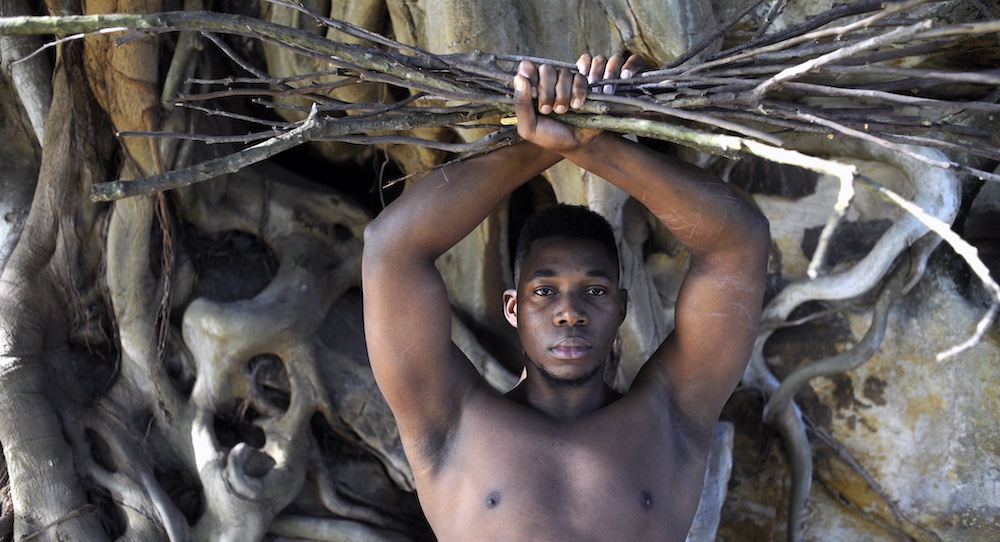Sydney Festival, Carriageworks.
19 January 2023.
Meryl Tankard AO’s long-awaited collaboration with composer Elena Kats-Chernin AO and visual artist Régis Lansac OAM has finally graced the stage for the Sydney Festival 2023 program. Kairos, from the ancient Greek, meaning “the right or opportune moment for doing, a moment that cannot be scheduled” is a work that explores aspects of the recent times, the scattering experience of the past three years, where we as a nation and global community have experienced a pandemic, a multitude of weather events and a myriad of challenges that could not have been predicted. How these events have affected the artists is something that Tankard has approached in the creation of Kairos.
Kairos was developed out of a residency at Bundanoon, surrounded by coastal bush, taking inspiration from some of the lesser-known work of artist Sidney Nolan and the writing of poet Arthur Rimbaud. Nolan’s work explores the Australian outback, landscape and history, including themes of drought and despair, a fitting collection for exploration of the current times. The dance artists workshopped solos in response to the stimuli, and music was composed by Kats-Chernin for each of the dancers. The compositions were joined to create a work played live throughout the performance by Kats-Chernin.
The cast was a phenomenal ensemble of early career and established talent. Lillian Fearn, Cloé Fournier, Taiga Kita-Leong, Jasmin Luna, Julie Ann Minaai and Thuba Ndibali each brought their own voice, their own unique flavour to the work.
In performance, each dancer explored the movement individually, leaning into the idea of isolation. Moments where you might expect there to be a sense of syncronicity, there was a subtle sense of lack of sync, not in touch with those around, in their own world but also attempting to communicate in a disjointed manner. Subtle, almost with a lack of awareness, but intentional by direction. There were varied moments of connection, reflecting the way we have all emerged from isolation, not easily able to touch, bond, communicate or share quite in the way we used to.
The work opened with three dancers behind a collection of scrims that lined the back of the large space. They wore stunning, Polynesian inspired grass-like costumes that had beautiful movement and aesthetic. Being behind the scrims which had shadowy images projected on them, we were not able to properly see the costumes in full, and the time in which they were on the stage did not do them justice. It would have been wonderful to see the concept introduced a little more, the costumes seen in front of the screen, given the time on the stage that justified their elaborate creation. They gave hints at a wonderful sense of movement and filling the space; it was disappointing not to see more of them.
The work initially felt as if it was going to have more of an indigenous flavour, with the first dancers to come onto the stage looking up, as if responding to what was coming from the sky, and this set a curious atmosphere that did not carry through the work, the opening reflecting how the remainder of the work followed. There were so many ideas that were introduced, so many interesting moments to flesh out and give some depth to the work, but not one idea seemed to connect with another nor complete it. Perhaps this was intentional. Certainly, it did leave one wanting more from each new idea. There was creative use of Sidney Nolan paintings throughout the work but no further exploration, just a montage of concepts. Yes, the work was about dealing with the chaos of the last three years and the disconnect we all felt; however, it did not take us on that journey, leaving an overall feeling of dissatisfaction. The dancers were the most phenomenal ensemble, all of whom we did not see any of them really move, really pull on the spectrum of their availability, which was disappointing. Neither was there a solid use of the ensemble.
It was a treat, as always, to have a live musician involved in the work. Composer Kats-Chernin was the virtuoso she is on piano, and even whilst the dancers moved the instrument and herself during playing, she did not so much as miss a moment. Her composition wove in and out of the work, at times with strength, at times perhaps other instruments may have been an asset to fill out the score.
Kairos was a work with incredible potential. With such iconic artists involved in creation on and off the stage, the expectation on this work was incredibly high, with a sold-out opening season. There were many interesting elements to the work, so many areas that could have been further explored, leading to a more complex and complete capture of the concepts. When such iconic artists come together to make work, we want it to be amazing. Kairos contained ideas for a work that could be something quite special, a work with many interesting and moving parts, and potential for further development.
By Linda Badger of Dance Informa.















